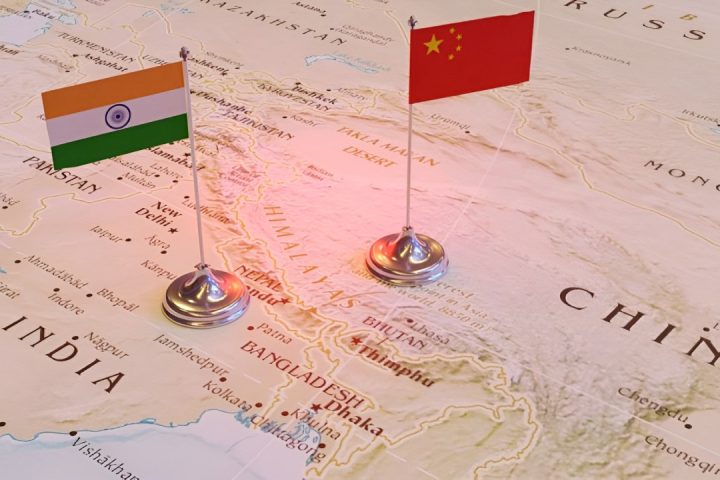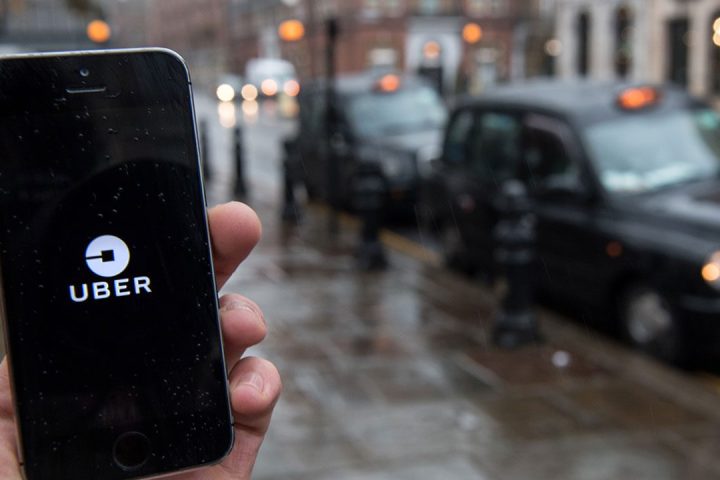In India, the insulting statements of the ruling People’s Party (BJP) officials against the Prophet Muhammad and the events that took place afterwards have brought the situation of Muslims in the country back to the agenda.

Hate speech against Muslims, who make up more than 200 million of India’s population of approximately 1 billion 400 million, is increasing day by day.
Most recently, Indian People’s Party (BJP) spokesperson Nupur Sharma’s insulting remarks against Islam and the Prophet Muhammad (PBUH) in a television program on June 3 raised tensions in the country. The situation was further complicated by the ruling party’s inaction in responding to the incident and its harsh reaction to the protests that erupted.
Across the country, people took to the streets to protest against remarks against the Prophet Muhammad. In some states, police resorted to violence against protesters.
More importantly, in Uttar Pradesh, for example, Muslim activists leading the protests were detained and their homes were demolished for allegedly being illegal.
So far, 2 people have died in the protests and dozens have been detained. Although the person who insulted the Prophet Muhammad has apologized, it is said that the attitude of the Indian administration is an important factor in the growth of the events.
Prime Minister Narendra Modi is also the target of increasing reactions both in India and in other countries.
Modi, who came to power in India in 2014, has been criticized for “remaining silent on such attacks” against the Muslim minority, especially in recent years.
![Hate speech against Muslims in India 2 [Indian police often clash with Muslims protesting against insulting the Prophet Muhammad. Photo: Reuters]](https://www.trthaber.com/dosyalar/images/2022-06-10T131653Z_730876390_RC21PU91NAU2_RTRMADP_3_INDIA-POLITICS-DIPLOMACY.JPG)
So, how did India get to where it is today?
After the partition of India in 1947, most of the Muslims in the country continued to live in India instead of migrating to Pakistan.
In the 80s, during the rise of Hindu nationalism, the number of identity-based conflicts between Muslims and Hindus increased, as did the scale of violence.
Thousands of people, mostly Muslims, were killed in the Babri mosque attack in December 1992 and in the Gujarat riots in 2002.
The Indian People’s Party (BJP), whose ideology is based on Hindu nationalism, consolidated its power in the 90s and won more seats than the INC in the 98 elections.
The BJP came to power alone under the leadership of Narendra Modi in the 2014 elections and further increased its mandate in the 2019 general elections. Since 2019, steps taken by the BJP government have raised concerns among Muslims about their future.
Citizenship Act amendment
The bill to amend the Indian Citizenship Act was passed by the Lok Sabha, the lower house of the federal parliament, the Rajya Sabha, the upper house and assented to by the President and became law.
According to the law, illegal immigrants in India are defined as those who enter the country illegally without a valid travel document, such as a visa or passport, or who enter legally and stay in the country for longer than the permitted period. Illegal immigrants, who are not allowed to obtain citizenship, can be imprisoned or deported.
The amendment to the Citizenship Act paved the way for 6 different religious groups from Pakistan, Bangladesh and Afghanistan to obtain citizenship in India. However, Muslim immigrants were excluded from this amendment.
The Indian government argued that Hindus, Sikhs, Jains, Buddhists, Parsis and Christians are religious minorities in Pakistan, Bangladesh and Afghanistan, which have state religions, and therefore citizenship was granted to minority groups fleeing religious oppression in these three countries.
![Hate speech against Muslims in India 3 [Indian authorities are demolishing the homes of activists involved in the protests. Photo: Reuters]](https://www.trthaber.com/dosyalar/images/2022-06-12T144628Z_1273326947_RC2DQU91AL77_RTRMADP_3_INDIA-POLITICS-DIPLOMACY.JPG)
Alarming steps
Since coming to power in 2019, the Indian government has taken a series of steps that have raised concerns about the very existence of Muslims in the country.
Of the 33 million people living in the state of Assam, 1.9 million people, mostly Muslims, were excluded from the National Register of Citizens.
The government has included in the register those whose names were included in the 1951 list and their descendants, as well as those whose names were included in the electoral rolls of March 24, 1971, just before Bangladesh declared independence, and in any central government document.
In Assam, 10 prison camps are being built for those who cannot prove their citizenship among the nearly 2 million people, mostly Muslims, who have been delisted.
Indian Home Minister Amit Shah’s announcement that the arrangement in Assam will be implemented in the rest of the country has put Muslims at risk of becoming “stateless”.
The Babri Mosque case, which has caused controversy between Hindus and Muslims for decades, was decided in favor of Hindus by the Indian Supreme Court. The mosque, described as the “Hagia Sophia of South Asia”, was demolished by Hindu militants on December 6, 1992, and more than two thousand people, mostly Muslims, were killed in the events that followed. The court’s ruling in favor of Hindus in the Babri Mosque dispute was another disappointment for Muslims.
In addition to all this, the government’s exclusion of Muslims in the amendment of the citizenship law caused an explosion of anger within the country.
Headscarf ban
Most recently, in recent months, in the Indian state of Karnataka, Muslim students have been prevented from wearing headscarves in schools.
A long-standing ban on headscarves across the state sparked controversy on January 1 when Muslim students at the state-owned Udupi Women’s Higher Secondary School wore headscarves to classes.
In other schools in Karnataka, Hindu students reacted when Muslim girls wore headscarves to classes, and started wearing saffron shawls to classes.
A meeting between school administrators, government officials and students and their parents in Udupi on January 19 failed to reach a solution.
-So, where is India heading with rising Indian nationalism and increasing hate speech against Muslims?
-What next for Muslims?
-What is the Modi administration aiming for?
-Do regional and global reactions have any impact?
South Asian Center for Strategic Studies (GASAM) Expert Dr. Hayati Ünlü answered our questions about the developments in India.
What are the origins of the “hate speech against Muslims” that has reappeared with the insult to the Prophet Muhammad? What does this discourse portend for India?
Hate speech against Muslims is not new for India. Understanding this discourse and attacks requires an understanding of the development of the ideology of Hindu nationalism, whose origins can be traced back to the early 20th century. This radical nationalist ideology, also known as Hindutva, developed its intellectual pillar through names like Savarkar, its sociological pillar through organizations like the All India Volunteer Organization (RSS), and finally its political pillar through parties like the Indian People’s Party (BJP), the political pillar of the Hindu nationalist family.
The new power structure, which was transformed especially with the rise of the BJP to power in 2014 and the filling of the bureaucracy with Hindu nationalist cadres, has always kept the anti-Muslim agenda dynamic and tried to implement Hindu nationalist policies in order to fulfill the anti-Muslim promises it made before coming to power on the one hand and to consolidate its power on the other. In this context, many regulations, from the Babri Mosque decision, which is of great importance for Muslims, to the Citizenship Law Amendment, have addressed the Hindu nationalist agenda and targeted Muslims. As a matter of fact, after the Babri Mosque debates were resolved in favor of Hindus, Gyanvapi Mosque was brought to the center of the agenda in order to build a similar agenda and the Hindu nationalist vein was tried to be fed through the mosque built by Evrenzip, the last great ruler of the Mughals, who was compared to Abdulhamid Khan.
Discussing “the world’s largest democracy”
This political agenda, which has such a hawkish character in domestic politics but fails to show the same toughness in foreign policy, essentially corresponds to the pragmatist policies of political elites who want to constantly reproduce power. Unfortunately, in the context of the other of the ideology, it does the greatest harm to Muslim communities, even to the point of exclusion from physical space. While there have been many instances of escalating violence against Muslims, from the Ayodya and Gujarat incidents to the recent Delhi incidents, it is argued that with the recent incidents that started with the insulting of the Prophet Muhammad and turned into a new campaign of violence, social trust in the country has been completely shaken. While the difficulty of rebuilding trust is considered impossible in all sociological analyses, the idea of India as the world’s largest liberal democracy seems to have been replaced by behavioral models that are now explained by fascism.
How accurate is the accusation that the Modi administration is silent on hate speech against Muslims? What is the Modi administration aiming for?
In the aftermath of the insults and the rising wave of violence, moderate statements have been made and attempts have been made to give the impression that those responsible have been punished, but domestic and foreign political observers who closely follow the country’s politics and are familiar with previous behavior and rhetoric find the responses inconsistent. It is also argued that Modi, who is remembered to have taken clear initiatives on many issues such as farmers’ protests, has a political calculation behind his failure to take similar initiative on violence against Muslims. It seems quite obvious that the Modi administration, which came with promises of great development but failed to prevent social collapse due to a major economic crisis, is trying to keep its social base with Hindu nationalism. The fragmented state of the opposition in the country and its inability to build a strong bloc against the BJP is also preventing the Modi government from softening.
It is accepted that the most important factor that can prevent the Modi government here is external pressure. Even the possibility of pressure from countries such as the United States due to the existence of anti-democratic practices in India and the possibility of a deterioration in relations with the US could have led the Modi administration to argue that it should develop moderate policies. However, the rise of China in Asian politics and the fact that India is at the center of the US policies to rebalance China have significantly reduced interference in India’s domestic politics due to geopolitical factors. In this respect, it can be observed that the Modi administration, which has a relaxed hand in domestic politics, has increased its capacity to resort to harshness both in terms of intimidating the opposition and pursuing nationalist policies against minorities.
Muslim countries reacted to the insult to the Prophet Muhammad. Does India care about the reactions? Or do the reactions have an impact on India?
First of all, it must be said that if the Islamic world really wants to unite, it has the capacity to solve the problem permanently through pressure on the Modi administration. In fact, the two most important items that India, which defines itself as a “rising Super Power” against China with the gas of the US, needs to become a Great Power are energy and investment. The Gulf States, particularly the United Arab Emirates and Saudi Arabia, have huge investments in the country.
“Muslim countries can influence”
Even the withdrawal of these investments could be enough to make the Modi administration back down, while the energy needs of the country, which also wants to grow, can be met from the center of the Islamic and Turkic World. In this respect, the warnings of the Gulf States, Iran or the countries in the Turkic World such as Kazakhstan on energy issues will always be met with reactions that the Modi administration cannot remain indifferent to.
Another issue that can tie India’s hands on the one hand, and on the other hand correspond to a trump card, is the Indian diaspora in the Gulf. While the capital sent to the country by the Indian diaspora in the Gulf, which corresponds to a large amount of hot money for India in the context of the “politicization of remittances”, corresponds to an agenda on which the Modi administration has to constantly develop policies, the loss of such an income could lead to damages that are difficult to accept for the Indian economy.
On the other hand, on the other hand, it is remembered that the Modi administration has threatened some countries with civil unrest over the density of the diaspora population in the Gulf. This security signal from Modi is perhaps the biggest obstacle to the Gulf countries not approaching the issue more decisively.
Do you think there will be more confrontation between Muslims and Hindus in India? What kind of future do you see for India in the context of “hate speech”?
As long as the current confrontational political climate persists and the Islamic world does not develop clear result-oriented policies, the process called “social Darwinism” where the big eats the small will continue. Of course, it is necessary to address the structural problems faced by Muslims in India. For example, the fact that Muslims are scattered all over the country and are disconnected and unaware of each other prevents them from developing a common agenda and policy. Muslims, who are mostly mobilized around local interests, are unable to increase their capacity to develop a national Muslim politics.
On the other hand, there are also institutional reasons such as the electoral system working against Muslims in the country. In a country with a narrow district electoral system, Muslims, who are already dispersed, cannot concentrate in certain electoral districts and determine the winning candidate. They are more likely to support the winner. In this respect, despite having a base of more than 200 million, they have difficulties in reaching the representation capacity to defend their interests. While Hindu nationalism and caste politics continue to be the most important criteria in determining the candidates of the parties, Muslims can fall far behind in the ranking of candidates.
“The constant election atmosphere is also an important reason”
Finally, perhaps as a political reason, the never-ending competition in the country’s political climate can be highlighted. So much so that the existence of elections that are constantly organized in certain parts of the country at all seasons of the year, and thus the inability to ever get out of the election atmosphere, creates the need for parties to keep their social bases dynamic. As such, Hindu nationalist parties such as the BJP are unable to take a break from the anti-Muslim agenda in order to keep the Hindu vote base awake.
In fact, last year, there were discussions about holding all elections in the country at the same time and it was argued that such a shift could have positive implications for both channeling more energy into foreign policy and normalizing domestic politics until the next elections. However, regional party interests prevented the arrangement from being implemented immediately. In this respect, the prospects for the normalization of Indian politics seem less likely as long as there is a persistent electoral atmosphere.





